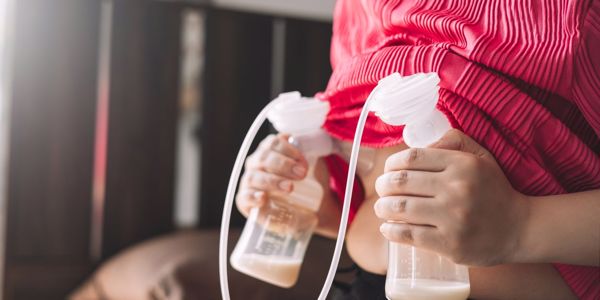Mastitis is one of the less common conditions that can occur with nursing, but it still impacts about 10% of individuals who nurse in the United States each year and 30% of nursing individuals worldwide. Mastitis is inflammation in the breast and usually occurs in nursing individuals, but it can also happen in other people. Mastitis occurs when a clogged duct is unable to clear or when someone is experiencing excessive engorgement, which causes swelling and inflammation. Being chronically engorged and pumping to empty the breast are two things that increase the likelihood of an individual developing Mastitis. Things like skipping feedings, wearing constricting bras or clothing, and weaning too quickly can also increase the possibility of developing Mastitis.
Signs & Symptoms
The first signs and symptoms of Mastitis will be everyday things that many nursing individuals experience. Frequently, engorgement and clogged ducts are the prequel to Mastitis. Taking care of these two more common nursing ailments is crucial to avoid Mastitis altogether. On the off chance that Mastitis is developing in your body, some signs and symptoms are an achy hard lump in your breast, flu-like symptoms, feeling achy and tired, a low-grade fever, and a change of appearance of the breast. If there are no visual changes to the breast, that does not mean that Mastitis is absent, especially if other symptoms are present.
What Can You Do?
We often hear that individuals who develop Mastitis need antibiotics, which can be accurate but is not always the case. Things that can also help Mastitis are getting adequate rest, applying cold packs to the breast/chest as often as possible, and continuing to feed the baby on demand. If you are pumping, make sure to do so every two hours. It can also be helpful to work on lymphatic drainage, which is done by providing a light massage to the breast tissue. You can find more information about this on the La Leche League website. Taking over-the-counter medications that reduce inflammation is also helpful for pain and reduction of inflammation, and some individuals find that probiotics are beneficial.
Some different herbs that have been found to help clear a Mastitis infection are Rosehips, Chamomile, Garlic, and Echinacea. Castor oil packing can also be highly beneficial and has been reported to clear infections that antibiotics are not touching. Another solution many have found is using a Hakkah pump and warm Epsom salt water to pull the infection out. There are tons of tutorials on this method online, and it is worth trying.
When to Call the Doctor
When treating a Mastitis infection, if it has not gone away within 48 hours, it is crucial to receive extra help and support from your primary care provider. Keeping up with your primary care provider is an excellent idea because some cases of Mastitis require additional support. When a Mastitis infection goes south, it can become a perilous situation. In some cases, antibiotics are the only appropriate treatment, and it is important to take care of the infection when this occurs.
Mastitis is a severe condition of the breast and should be taken seriously. If natural options are not making a difference, pharmaceutical action might be required. Listen to your body and trust that treating and being able to continue with your nursing journey is much better than allowing the infection to fester, causing pain and discomfort and a possible unsafe situation.







